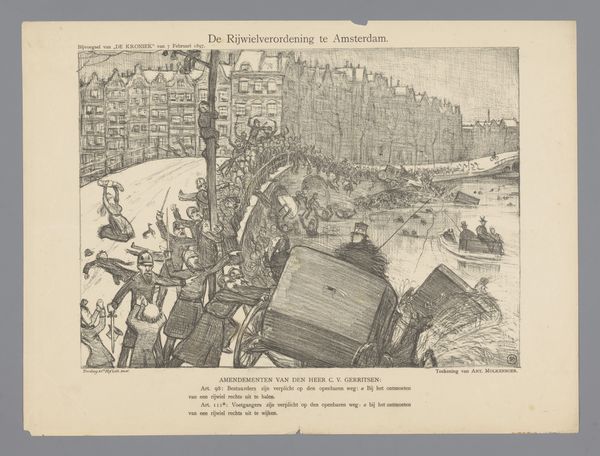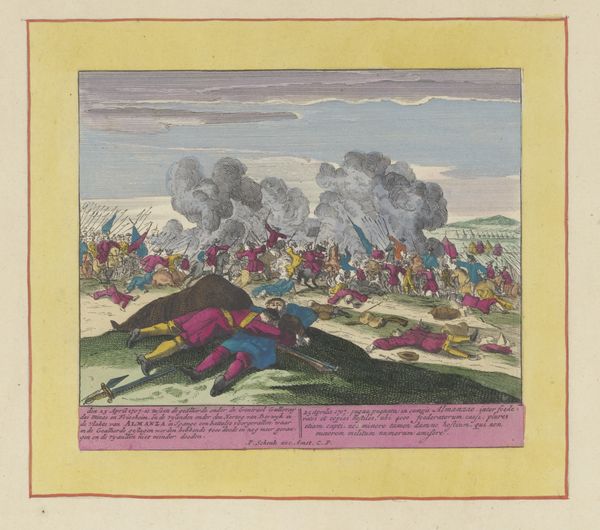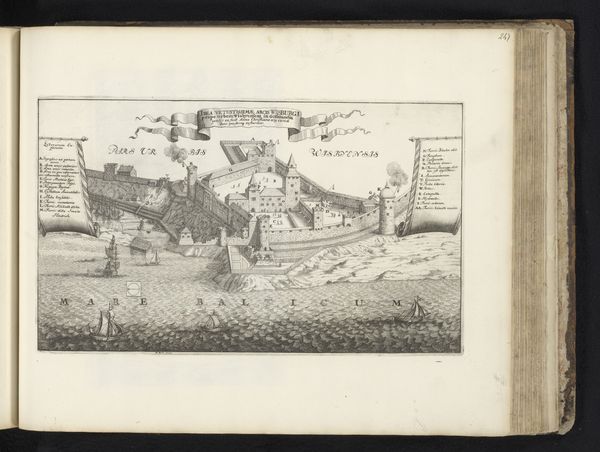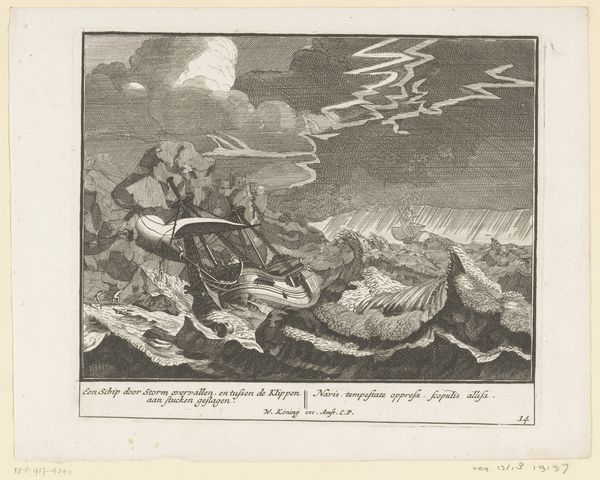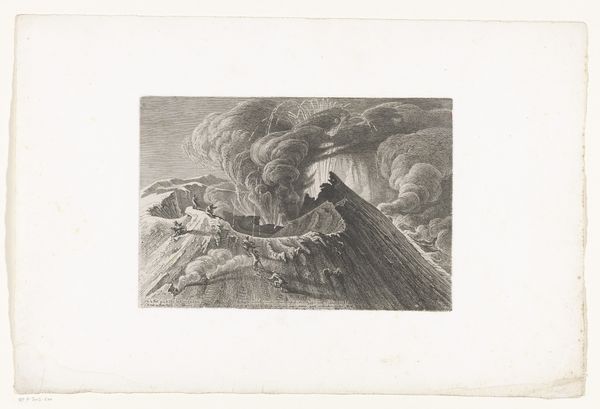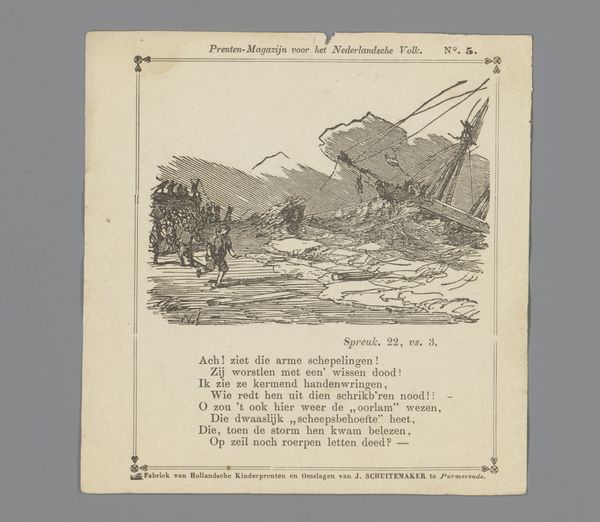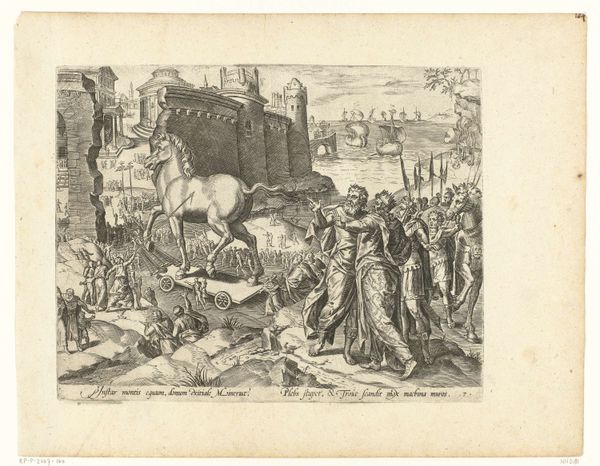
graphic-art, print, woodcut
#
graphic-art
#
art-nouveau
#
narrative-art
#
ink paper printed
# print
#
caricature
#
social-realism
#
woodcut
#
history-painting
Dimensions: height 312 mm, width 390 mm
Copyright: Rijks Museum: Open Domain
Curator: This powerful print is entitled "Bloedige onderdrukking door tsaar Nicolaas II van de Revolutie van 1905," which translates to "Bloody Suppression by Tsar Nicholas II of the Revolution of 1905." The anonymous work dates to, of course, 1905 and utilizes ink on printed paper in a compelling way. Editor: The darkness just leaps out at you. It's a sea of bodies depicted in almost frantic detail, contrasted against Nicholas II looming over them, entirely detached. It's immediately oppressive. Curator: The use of caricature here is particularly potent. We see Nicholas presenting a document labeled "concessions," while seemingly standing atop the slain revolutionaries. It's meant to expose the hollowness of his supposed reforms. The throne's presence in the background, adorned with a regal eagle, suggests that this scene of bloodshed maintains imperial power. Editor: Absolutely. It highlights the utter disparity between the Tsarist regime and the suffering populace. This visual language feels distinctly rooted in Social Realism. Notice how he is clean, neat, unaffected, literally elevated above a sea of bodies in disarray, hinting at the complete disregard for human lives by those in power. Curator: Social Realism certainly captures part of it. Yet the image also draws from the emotional intensity of Art Nouveau, particularly in its stark lines and dynamic composition. Think of this as a historical account rendered with high symbolic tension. It really pulls at something primal. Editor: It's a damning statement. To think, Nicholas’s perceived inaction in this context would eventually play a critical role in fueling revolutionary anger, directly connecting him to an entire country's long struggle against oppressive forces. I wonder how this circulated. It must have had immense persuasive value at the time. Curator: I think we see both grief and a promise of rebellion crystallized in ink and paper. Visual resistance is always worth something in these scenarios. Editor: For me, it feels like a crucial artifact in examining how regimes rationalize violence, offering invaluable context for today's discussions about power, oppression, and resistance.
Comments
No comments
Be the first to comment and join the conversation on the ultimate creative platform.

